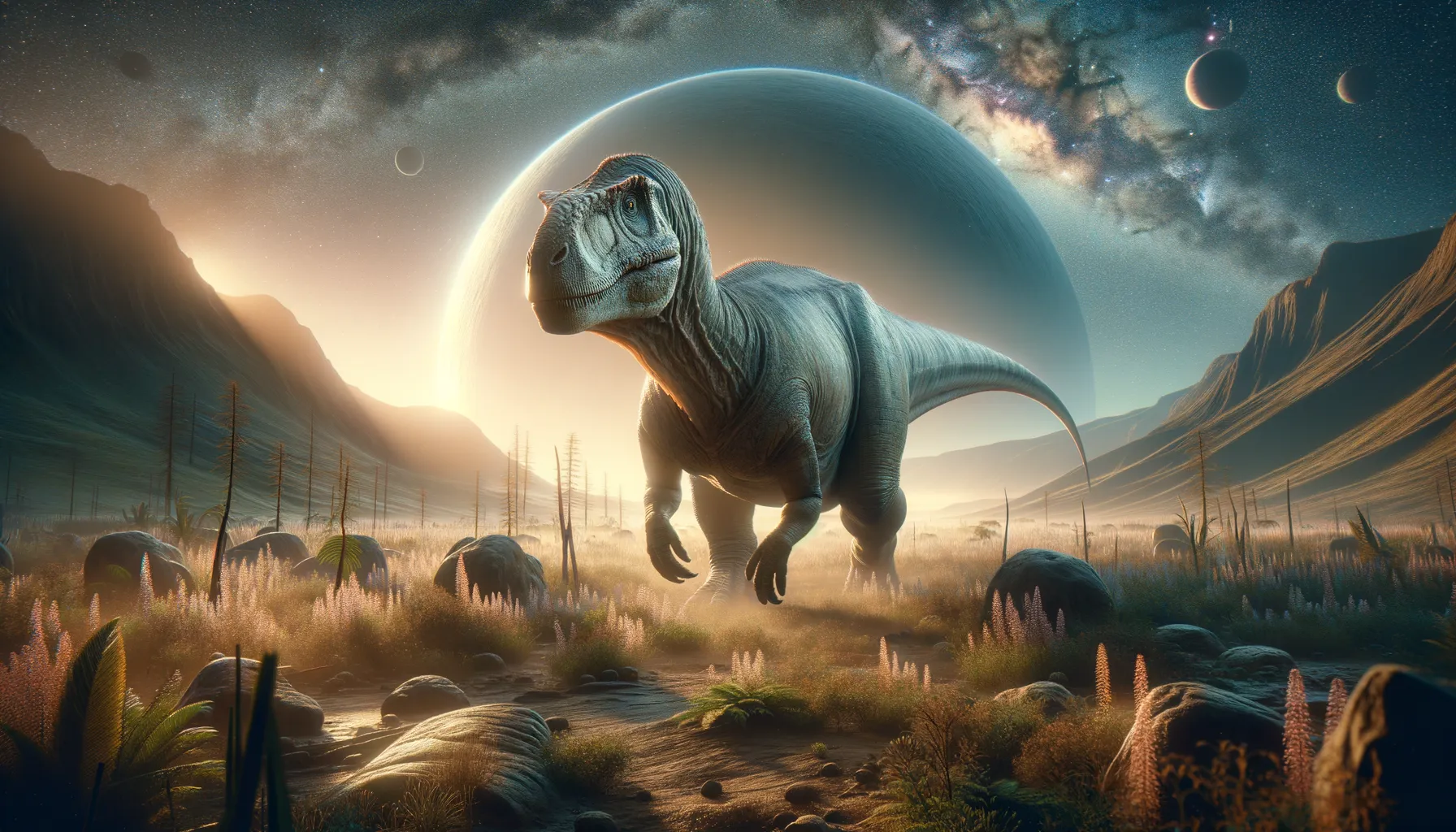
Pilmatueia
A gentle giant from prehistoric Argentina.
Period
Cretaceous
Length
Roughly 23 feet long.
Height
Approximately 8 to 10 feet tall.
Weight
About 1 to 2 tons.
Pilmatueia was a notable sauropod dinosaur discovered in Argentina. It roamed the Earth during the Cretaceous period, and its fossils have provided valuable insights into sauropod diversity. This dinosaur was not particularly fast but managed to navigate the shifting landscapes of its time effectively. It had a largely herbivorous diet, feeding primarily on available plant matter. The discovery of Pilmatueia adds depth to our understanding of South America's prehistoric fauna.
Diet
Pilmatueia was herbivorous, primarily feeding on the lush vegetation of its era. It likely consumed a variety of ferns, cycads, and conifers prevalent in its environment.
Hunting
As a herbivore, Pilmatueia did not engage in hunting. Instead, it grazed peacefully on plants, using its long neck to reach higher foliage.
Environmental challenges
Pilmatueia faced shifting climates and occasional droughts that affected its food supply. Competition for resources with other herbivores was a constant challenge. Predatory threats from contemporary carnivorous dinosaurs also shaped its survival strategies, likely driving them to migrate in search of safer grounds. Seasonal changes would have influenced their movement patterns to access abundant plant food.
Speed
Moderate; not built for speed but adequate for migration.
Lifespan
Estimated at 20 to 30 years.
First discovery
Discovered in 2018 in Argentina's Neuquén Province.
Fun Facts
- Pilmatueia is named after the Pilmatué region in Argentina, where its fossils were first discovered.
- This dinosaur lived during the Late Cretaceous period, about 86 million years ago.
- Pilmatueia was part of the titanosaur group, which includes some of the largest land animals ever to exist.
- Despite its massive size, Pilmatueia was a herbivore, feasting on plant material with its long neck and tail.
- Fossils of Pilmatueia have helped scientists understand more about the diversity of titanosaurs in South America.
- It is known for having distinctive vertebrae features, which help paleontologists identify and classify its remains.
- Pilmatueia, like other titanosaurs, likely had bony plates that may have served as protection from predators.
Growth and Development
Pilmatueia experienced steady growth throughout its life, supported by a nutrient-rich diet. It underwent various stages of development, with juvenile dinosaurs being considerably smaller. As they matured, they developed more robust limbs to support their massive bodies. This species likely reached full maturity by their mid-teens.
Habitat
Pilmatueia thrived in the semi-arid regions of ancient Argentina, surrounded by a mix of forests and open plains. It preferred areas with ample vegetation to sustain its diet. Water sources like rivers and lakes were crucial to its survival, providing hydration and attracting plant life. Its environment was shaped by periodic dry spells, influencing its migratory behavior.
Interaction with other species
As a herbivorous sauropod, Pilmatueia coexisted with various other dinosaurs, including predatory theropods. It may have formed herds for protection, increasing survival odds against predators. Interaction with smaller herbivores could have led to mutual benefits, such as shared feeding grounds. Fossils show traces of worn grasslands, indicating shared habitual areas with other species.
Natural lifespan
Its natural lifespan was likely 20 to 30 years.
Reproduction
Reproduction involved the laying of eggs in nests prepared by the females. Hatchlings were vulnerable and required rapid growth for survival. They likely relied on instinct and herd behavior for protection during their early life stages. Breeding season possibly coincided with optimal environmental conditions for food availability.
Social behaviour
Pilmatueia may have exhibited herding behavior, providing mutual protection. Social interactions were crucial for young dinosaur survival, relying on adults for guidance. Communication within herds could have been achieved through vocalizations or physical signals. Strong social structures may have been necessary for finding food and warding off predators.
Fossil locations
The only known fossils of Pilmatueia were discovered in the Neuquén Province in Argentina. The finding site provides valuable context about the environment Pilmatueia inhabited. Fossil remains include partial skeletons that help researchers understand its structure and lifestyle. The discovery site is part of the rich fossiliferous strata known for preserving diverse Cretaceous period life.
